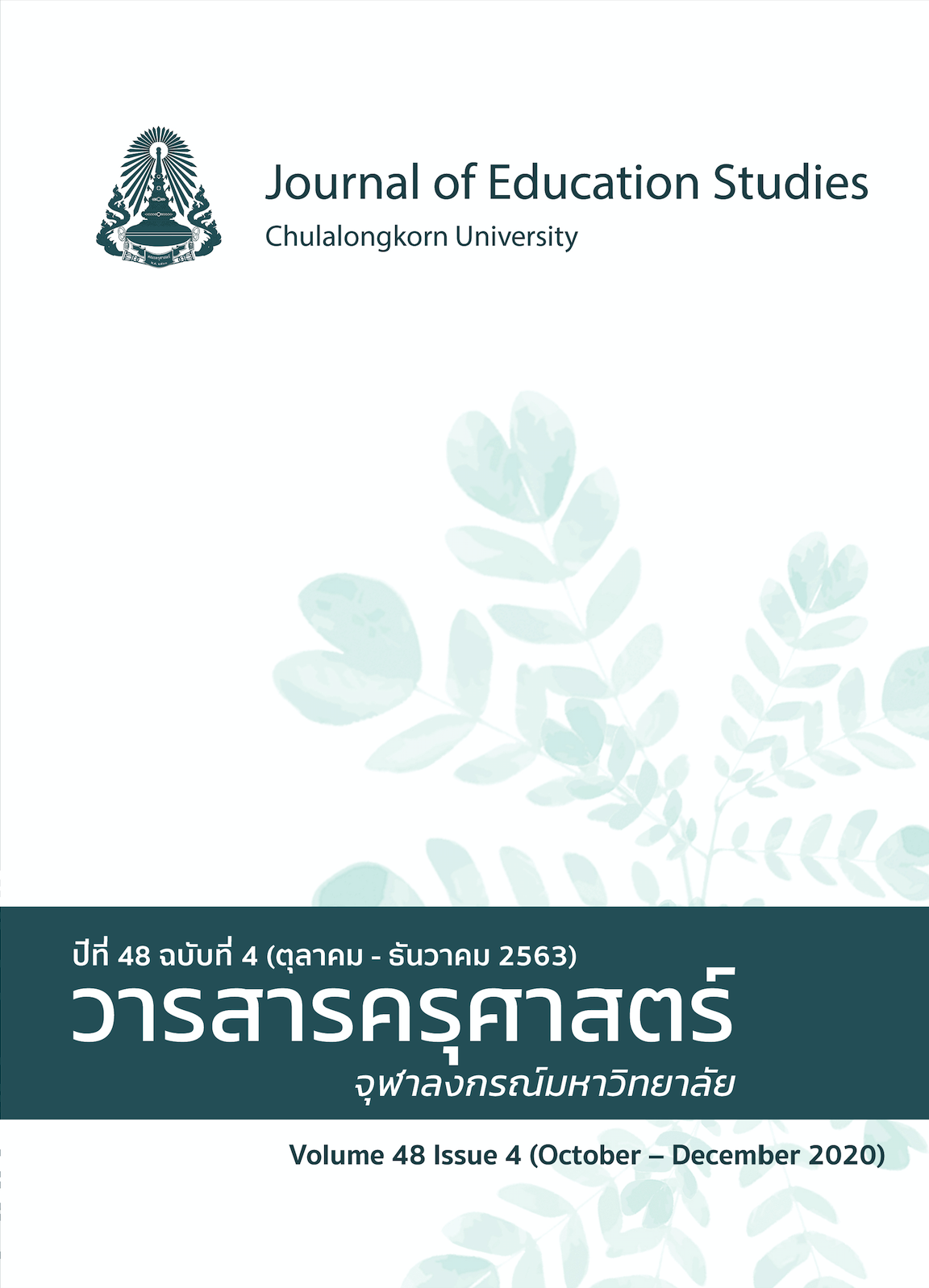A Needs Assessment Study in Developing Cultural Awareness of Undergraduate Students
Keywords:
needs assessment study, critical media literacy, multicultural, virtual worlds, infographics, cultural awarenessAbstract
This research aims to study the need to develop cultural awareness among undergraduate students in Thailand. The sample group comprised 400 undergraduate students under the Office of the Higher Education Commission (OHEC), Ministry of Education, Bangkok, who were recruited by the purposive sampling method. Applied tools used to collect data consisted of a questionnaire which elicited the students’ opinions about critical media literacy, multiculturism, virtual worlds and infographics of undergraduate students, and included a checklist of 45 items, rating scales and open-ended questions. Findings were presented as percentage, mean and standard deviations, and modified Priority Needs Index. The results show the indices needed to develop an instructional model of critical media in multicultural virtual worlds with infographics to enhance cultural awareness among undergraduate students in Thailand. Overall, a comparison of the priority needs index values revealed the average GPA (PNIModified) at a moderate level (PNIModified = 3.17).
References
Barbour, M. K., Archambault, L., & DiPietro, M. (2013). K–12 online distance education: Issues and frameworks. American Journal of Distance Education, 27(1), 1-3.
Bartle, R. A. (2003). Designing virtual worlds. New Riders.
Carl, A. (2009). Virtual worlds, simulations, and games for education: A unifying view. Innovate: Journal of Online Education, 5(5). https://nsuworks.nova.edu/innovate/vol5/iss5/1
Cortes, E. C. (1996). Preparing for multicultural future. Principle, 76(1), 16-20.
Grigoryan, A., & King, J. M. (2008). Adbusting: Critical media literacy in a multi-skills academic writing lesson. English Teaching Forum, 46(4), 2-9. http://files.eric.ed.gov/fulltext/EJ1096283.pdf
Kellner, D., & Share, J. (2007). Critical media literacy, democracy, and the reconstruction of education. In D. Macedo & S. R. Steinberg (Eds.), Media literacy: A reader (pp. 3-23). Peter Lang.
Obamos, E. (2014). Deconstructing the digital divide critical media literacy implementation. University of San Francisco. http://repository.usfca.edu/cgi/viewcontent.cgi?article=1047&context=artscistu
Office of the Education Council [OEC]. (2010). Academic lecture to raise awareness of the ASEAN community. Pimdeekarnpim. http://backoffice.onec.go.th/uploads/Book/1020-file.pdf
Osula, B., & Irvin, S. M. (2009). Cultural awareness in intercultural mentoring: A model for enhancing mentoring relationships. International Journal of Leadership Studies, 5(1), 37-50.
Padungchewit, J. (2007). Culture, communication and identity. Chulalongkorn University Printing House.
Sarasuphab, S. (2010). Development of an online social network learning model utilizing situated learning theory to enhance intercultural awareness of foreign language learners [Doctoral dissertation]. Chulalongkorn University Intellectual Repository (CUIR). http://cuir.car.chula.ac.th/handle/123456789/19364
Thomassen, I. (2014). Supporting social learning and cultural awareness using a 3D virtual world for military training: An empirical study [Master’s thesis]. University of Oslo. https://www.duo.uio.no/handle/10852/40754
Yodsin, N. (2004). Effects of virtual panorama image in educational field trips on web upon learning achievement of Mathayom Suksa four students [Master’s thesis]. Chulalongkorn University Intellectual Repository (CUIR). http://cuir.car.chula.ac.th/handle/123456789/482
Yongyuan, B. (2008). Promotion of child development in the context of cultural diversity. National Institute for Child and Family Development, 93–95. http://www.cf.mahidol.ac.th/autopage/file/SatAugust2008-16-15-47-4




